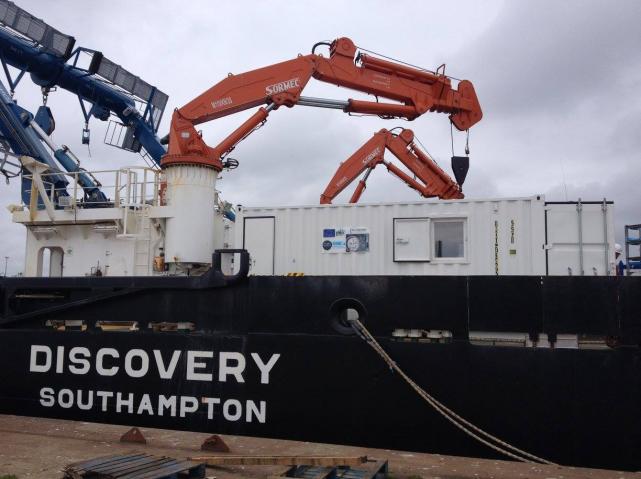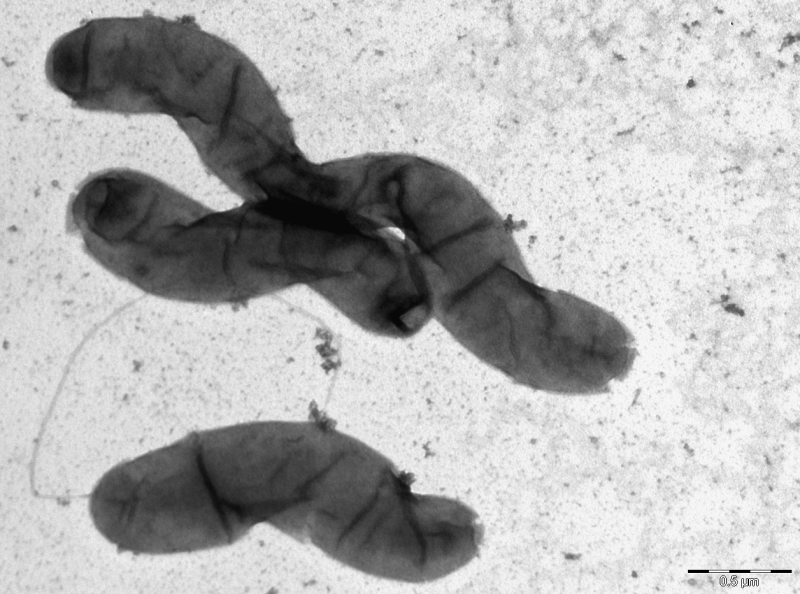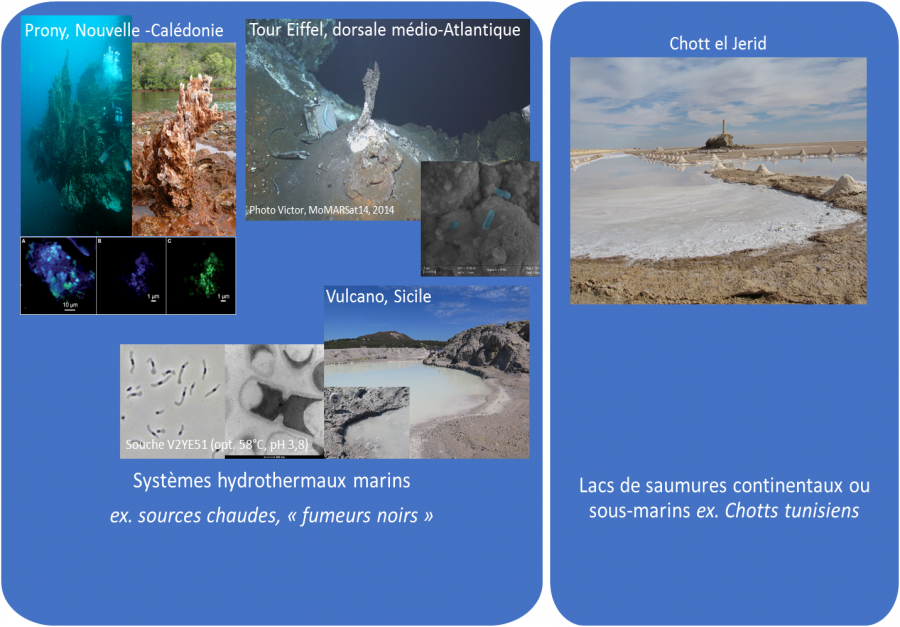MEB - Topic 3
Ecology and physiology of microorganisms in extreme conditions
Moderator : Gael Erauso
We are interested in prokaryotes that are referred to extremophiles because they proliferate under physico-chemical (temperature, pH, salinity, pressure, and ionizing radiation) or biological (energy source) conditions that are close to the limits of life on Earth. Their natural living environments include :
- marine hydrothermal systems that are associated with volcanic activity (hot springs and "black smokers") or other geological processes such as serpentinization;
- lakes with continental brines (Tunisian chotts) or underwater lakes (DHAB in the Mediterranean);
- oceanic sub-surfaces, which might represent the largest microbial compartment on Earth;
- deep oceanic domains, which comprise 80% of the hydrosphere.
These environments are considered extreme according to multiple factors, such as the pH (varies between 2 and 4), temperature (varies from 2°C to more than 110°C in hydrothermal systems), and hydrostatic pressure (the average depth of the oceans is 3850 m, corresponding to a hydrostatic pressure of 38.5 MPa). The prokaryotes that develop in these locations are multi-extremophiles (acidophiles, thermophiles, piezophiles, and psychrophiles).
Our main goals are as follows:
- Explore the specific and functional diversity of prokaryotes (and associated viruses)
- Understand the functioning of these ecosystems
- Comprehend the biological processes that allow these extremophiles to live at the limits of life
Our methodological approaches are multidisciplinary, ranging from biogeochemistry to (meta) genomics. These approaches are developed during sampling campaigns under in-situ conditions, in the laboratory by using cultures of model study organisms, or in silico during the bioinformatic analysis of NGS sequencing data.
Examples of studies
Response of sulfate-reducing bacteria to the hydrostatic pressure
We study the hydrostatic-pressure adaptation mechanisms of sulfate-reducing microorganisms (e.g., Desulfovibrio sp.) that are isolated from deep marine environments (i.e., hydrothermal vents and wood falls). We are working on determining their ability to grow at different pressures by using culture systems in hyperbaric conditions (up to 40 MPa). We are using global approaches such as genomics, proteomics, and transcriptomics to identify the factors of this adaptation. In addition, biochemical, enzymatic and molecular genetic techniques enable us to study some of these factors in more detail.




